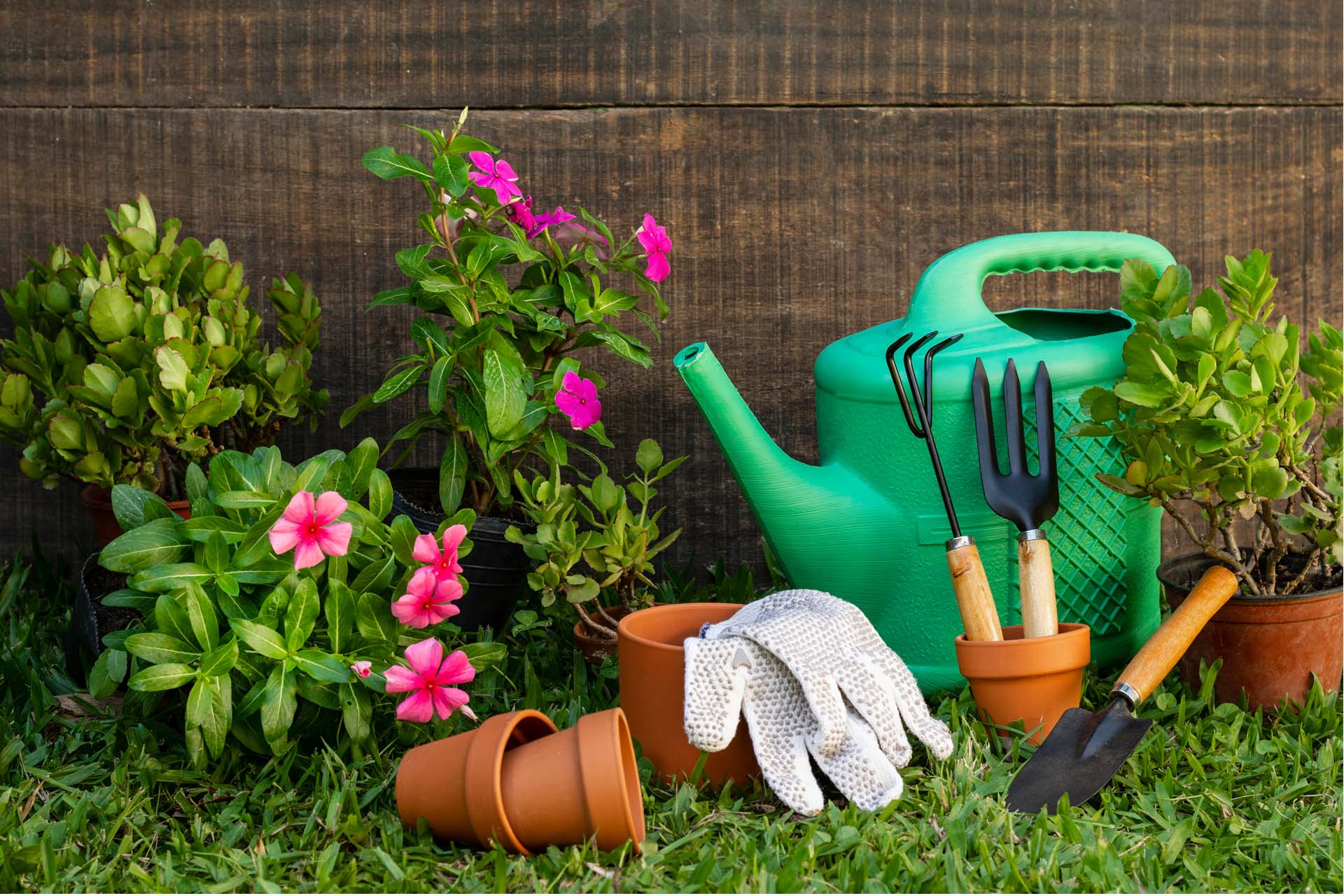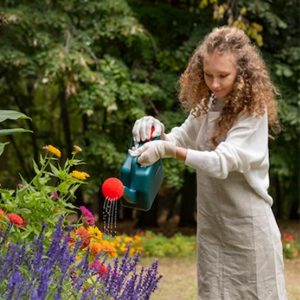
If you’ve already started or are still planning your spring gardening, read our checklist of tasks and tips.
Take a look at your backyard
Spring gardening should begin by assessing the damage caused by the cold and often stormy winter weather. While inspecting your vegetable garden, flower beds and landscaping, remember to pay special attention to trees that are equally tolerant of weather damage. Some trees particularly very old and very young may be left in a dangerously damaged state. If in doubt about the health of your tree, contact a professional arborist for guidance.
Pay attention to landscaping first
If you are gardening in the spring, the first thing you should focus on is landscaping, especially fixing retaining walls and hedges. Then move on to more gentle landscaping like gutters, pathways, and flower beds.
Clean and sharpen your gardening tools
Pro gardening tips – check before planting and cleaning your gardening tools in earnest. Clean with hot water and oil the trimmer. Dirty and rusty tools are difficult to work with and can even damage your plants.
Create a composting area
If you haven’t created one yet. When cleaning your backyard, your waste makes a great base for composting.
Start by pruning trees and trimming hedges
Trim and shape overgrown trees and hedges to restore their shape. If the tree or hedge is too large, entrust this task to a professional arborist with the appropriate equipment and experience. This may also be an appropriate time to remove unsightly tree stumps in your backyard. It is easier to remove if left to soften in damp weather.
Clean your flower beds and vegetable garden
At the top of our guide’s list of spring gardening tips is the importance of cleaning before planting anything. Remove nutrient-eating debris and unwanted weeds from the soil. They also hurt your eyes.
Prepare the soil
Add compost, well-seasoned manure, or slow-release nutrients for new plants, vegetables, and trees. It is also convenient to prepare pots with fresh pots before starting sowing.
Start Planting
Start by planning what and where to plant. Every plant or tree has certain requirements in order to bear full fruit or blossom. Some need shade, others a sunny or well-drained spot. Ask your local gardener or garden store for advice on what is best for your area. If you’re doing large-scale landscaping work, such as planting trees, it’s a good idea to get professional help. Without proper thinking and guidance, trees can grow dangerously near power lines or private property and cause long-term damage.
After sowing
cover to slow down the growth of weeds and prevent moisture evaporation and loss of nutrients from the soil when sunlight is strong. Clean and refurbish your outdoor furniture to enjoy the beautiful outdoors.
Tree Soldiers– All tree cutting and other services. Experts in tree removal, stump demolition, stump removal, tree trimming, tree mulching, tree pruning and emergency tree removal in New York!



abrir una cuenta en Binance
November 4, 2024Your point of view caught my eye and was very interesting. Thanks. I have a question for you.
atvērt binance kontu
November 19, 2024Your point of view caught my eye and was very interesting. Thanks. I have a question for you.
furosemide weight loss
January 17, 2025No dosage adjustment is required based on age alone does lasix cause diarrhea dollar rose from arecent seven week low against a basket of currencies on Fridayas investors bought at cheaper levels, with speculation as towhen the Federal Reserve might begin cutting back its monthlybond buying program dominating market talk
binance
March 5, 2025Thanks for sharing. I read many of your blog posts, cool, your blog is very good. https://entretien-menage-nettoyage.com/stunning-information-regarding-amazon-price-history-exposed/?unapproved=818&moderation-hash=37819d8c5a7093661548743212d21a4e#comment-818
binance kod
May 3, 2025I don’t think the title of your article matches the content lol. Just kidding, mainly because I had some doubts after reading the article.
Mag-sign up sa Binance
May 15, 2025I don’t think the title of your article matches the content lol. Just kidding, mainly because I had some doubts after reading the article.
binance register
May 24, 2025Your point of view caught my eye and was very interesting. Thanks. I have a question for you.
注册免费账户
June 3, 2025Your article helped me a lot, is there any more related content? Thanks!
Реферальный код на binance
July 5, 2025Your article helped me a lot, is there any more related content? Thanks!
Account binance
August 18, 2025I don’t think the title of your article matches the content lol. Just kidding, mainly because I had some doubts after reading the article.
Melden Sie sich an, um 100 USDT zu erhalten
August 24, 2025Your point of view caught my eye and was very interesting. Thanks. I have a question for you. https://www.binance.com/join?ref=P9L9FQKY
binance
October 26, 2025Thank you for your sharing. I am worried that I lack creative ideas. It is your article that makes me full of hope. Thank you. But, I have a question, can you help me?
binance h"anvisningskod
January 1, 2026Can you be more specific about the content of your article? After reading it, I still have some doubts. Hope you can help me. https://www.binance.com/sl/register?ref=I3OM7SCZ